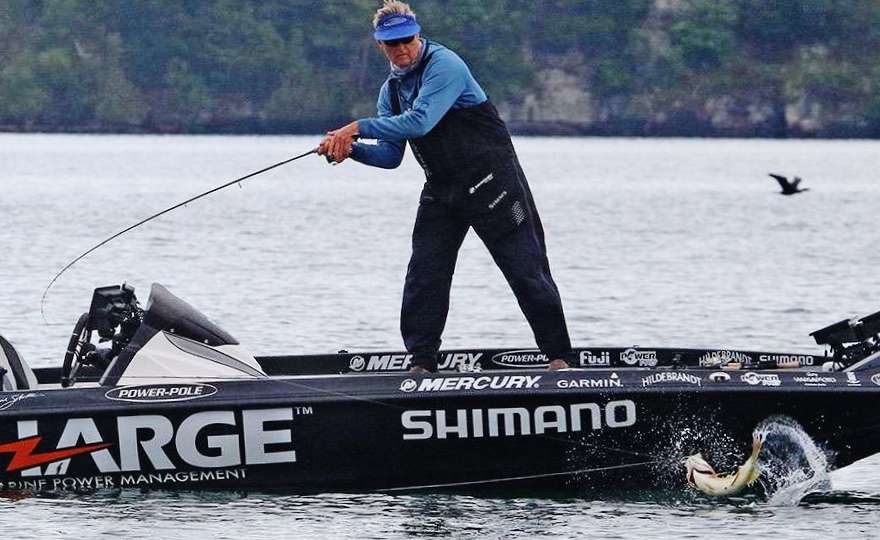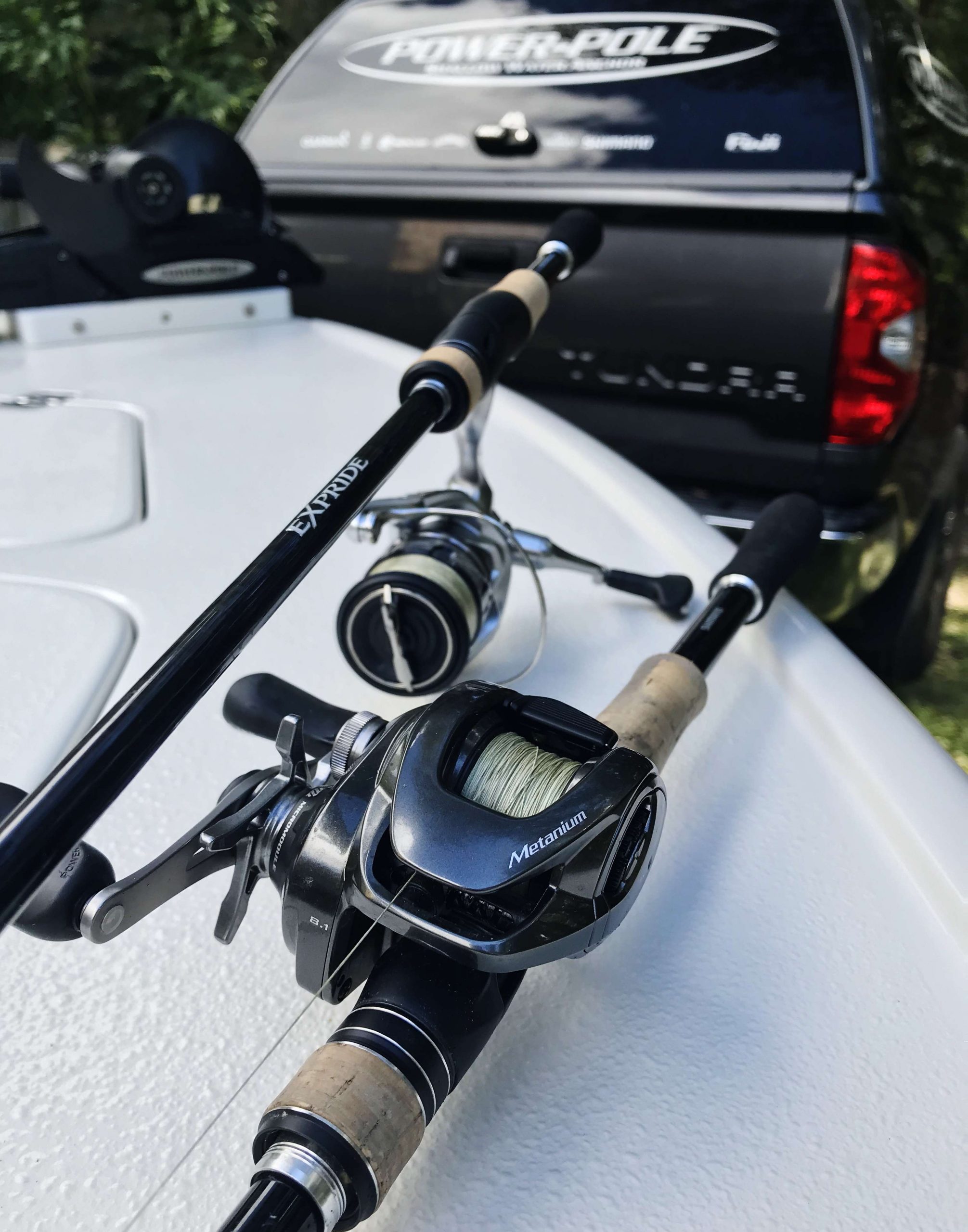
In competitive fishing, there is little room for error. Everything needs to be as precise as possible … especially when it comes to your equipment.
With so many aspects of the game beyond our control, tackle selection is one variable we do have command over. And not one angler on the Bassmaster Elite Series takes that for granted.
Regardless of the lake, river or reservoir, countless hours are spent prepping our equipment for each event … hoping it pays off. And a big part of that preparation involves balancing our equipment — making sure we have the right action rod paired to the correct size and ratio reel. That goes for everything from flipping to finesse fishing.
All components must work together — rod, reel, line and lure. Even the slightest variance can affect an outcome.
Case in point
Take last season’s St. Lawrence River tournament, for example — an event I led for two days. My primary setup consisted of a 7-foot-2 medium-heavy spinning rod with a fast tip, paired to a 3000-size reel. For me, the pair offered the exact weight, balance and feel required to detect the subtlest of bites … many of which occurred on a semi-slack line. It also provided the power I needed to battle big smallmouth in current.

The specific combo I chose was a Shimano Expride 272MH spinning rod and Stradic 3000XG reel, which was spooled with 10-pound Power Pro SSV2 and tipped with 8-pound fluorocarbon leader. That was as light as I dared to go, considering the threat of zebra mussels and the size of the fish I was catching.
Yeah, a lighter leader might have yielded a few more bites, but my landing percentage more than made up for it. In that event, I caught two 6-pounders, numerous fives and a bunch of fours, all of which tested my tackle to the fullest.
In the fall of 2019, when our tour visited Santee-Cooper Reservoir, I used a nearly identical setup, but for a very different application.
While most of the field was power fishing cypress trees with heavy tackle, I figured out a finesse approach that could coax the less active fish holding on those very same trees. Again, my primary combo consisted of a 3000-size spinning reel and 7-foot-2 medium-heavy spinning rod (spooled exactly like the St. Lawrence setup). The only difference was the soft-plastics I used.
On the St. Lawrence, I relied mainly on a 4-inch Yamamoto Senko rigged on a 1/4-ounce Ned head. At Santee-Cooper, it was a weightless, wacky-rigged 5-inch Senko. The slow fall of the Senko, combined with the right balance of tackle, gave me shots at fish the other guys were missing. And that led to a Top 10 finish.
These are only a couple of examples of how I balance my spinning outfits. There are others — including setups for casting light hard baits in windy conditions, or skipping soft-plastics beneath overhanging objects. It’s usually line and lure size, combined with the target or the conditions that determine the balance of tackle required.
Ratios matter
When it comes to baitcasting setups, the range is much broader — particularly when considering retrieve ratios.
In parts of the country where flipping is a primary technique, big rods are now being paired with smaller, lower profile reels featuring high-speed gear ratios. Although the trend challenges the more traditional setups, there are distinct advantages to the approach.
This generation of flippers wants a reel that maximizes line recovery with each turn of the handle, yet weighs as little as possible in order to defeat the fatigue associated with the technique. They also want the smaller spool size to minimize start-up inertia, thus making each presentation of the lure smoother and more efficient.
I’m in this same camp, and the reel I rely on is the Shimano Metanium 150XG in the 8.1:1 gear ratio. Made with magnesium, the CoreSolid body of this lightweight reel is super strong and rigid, which helps me feel even the slightest of taps on the end of my line. Add to that its solid brass MicroModule main gear, and I know I have a reel with enough guts to winch big bass out of super thick cover.
To balance my flipping setup, I pair the Metanium to an 8-foot Expride carbon-graphite flipping and pitching rod. My preferred line sizes range from 20-pound fluorocarbon (for super clear water) to 40- and 65-pound Power Pro braid for super thick cover … or whenever I feel I can get away with it.
For anglers who spend more time cranking on deep structure, their preference is for slower-paced reels with lots of torque. The idea is to keep the lure at the desired depth zone longer, while maintaining a comfortable cranking cadence and feeling everything the bait touches.
Among the more popular choices is the Curado K 200PG with 5:1 gear ratio . The reel’s compact, ergonomic profile provides the comfort and feel needed to make smooth, long casts with repetition. And it has a silky-smooth drag, which helps keep quality fish buttoned up.
My personal rod choice in most situations is the Expride EX 170MGA, which translates to a medium glass composite with moderate action. In most applications, I’m cranking with 10- to 12-pound test mono or fluoro. Which I choose will depend on the depth and cover I’m fishing.
Sure, there are times when I’ll opt for a different power rod, or perhaps a higher-speed reel, like when I’m burning a lipless crankbait through the tops of submerged hydrilla. But for the most part, it’s slower reels and softer rods that are my go-to choices for cranking.
Systems summary
These are just some of the scenarios that help me to determine the right balance of tackle. There are countless others.
So, whether you use the tackle I like, or you have your own preferences, be sure the rod, reel, line and lure are all working together as one. If they are, you’re guaranteed to be more efficient and accurate in your presentations, and likely to put more fish in the boat.





